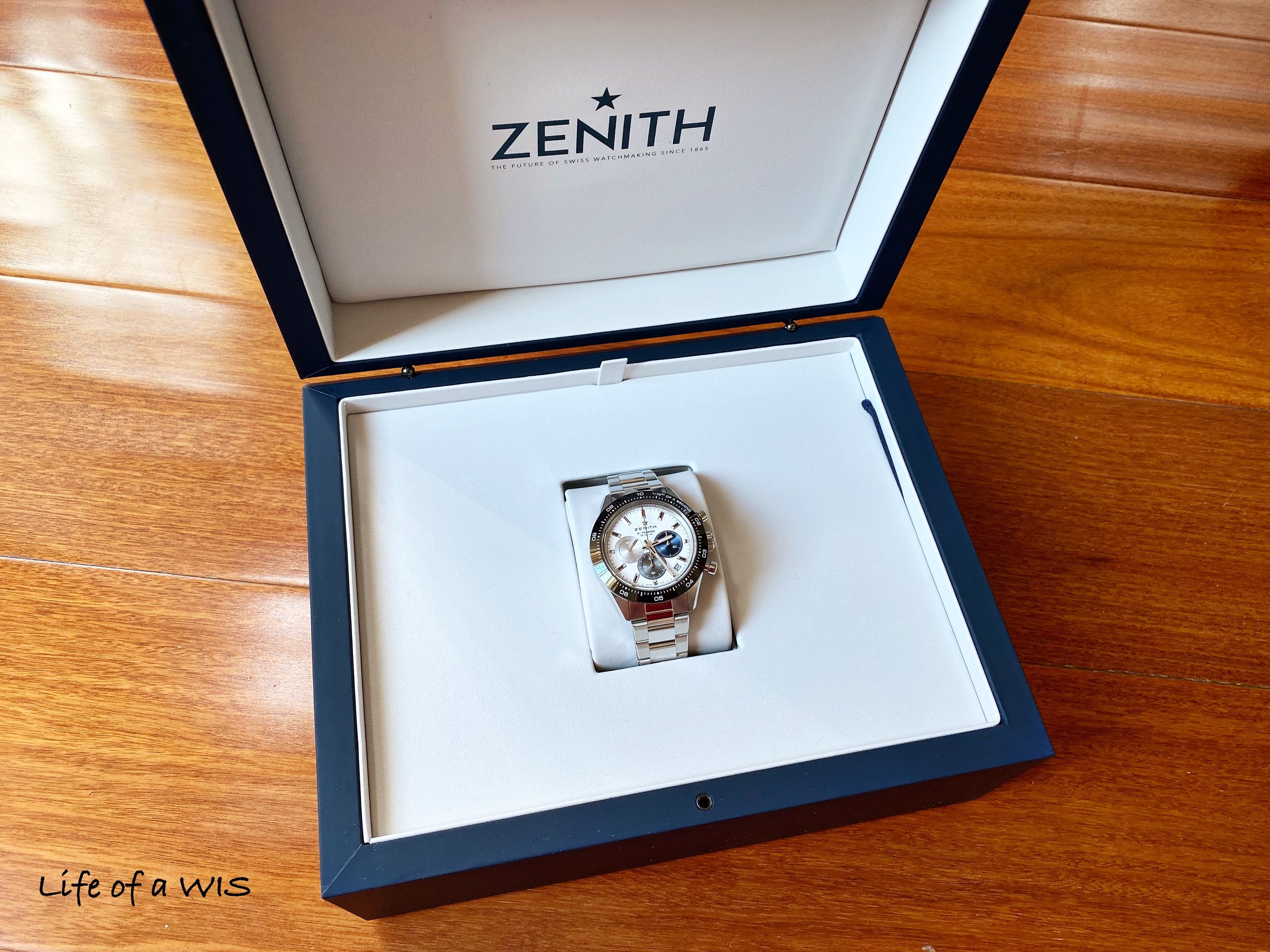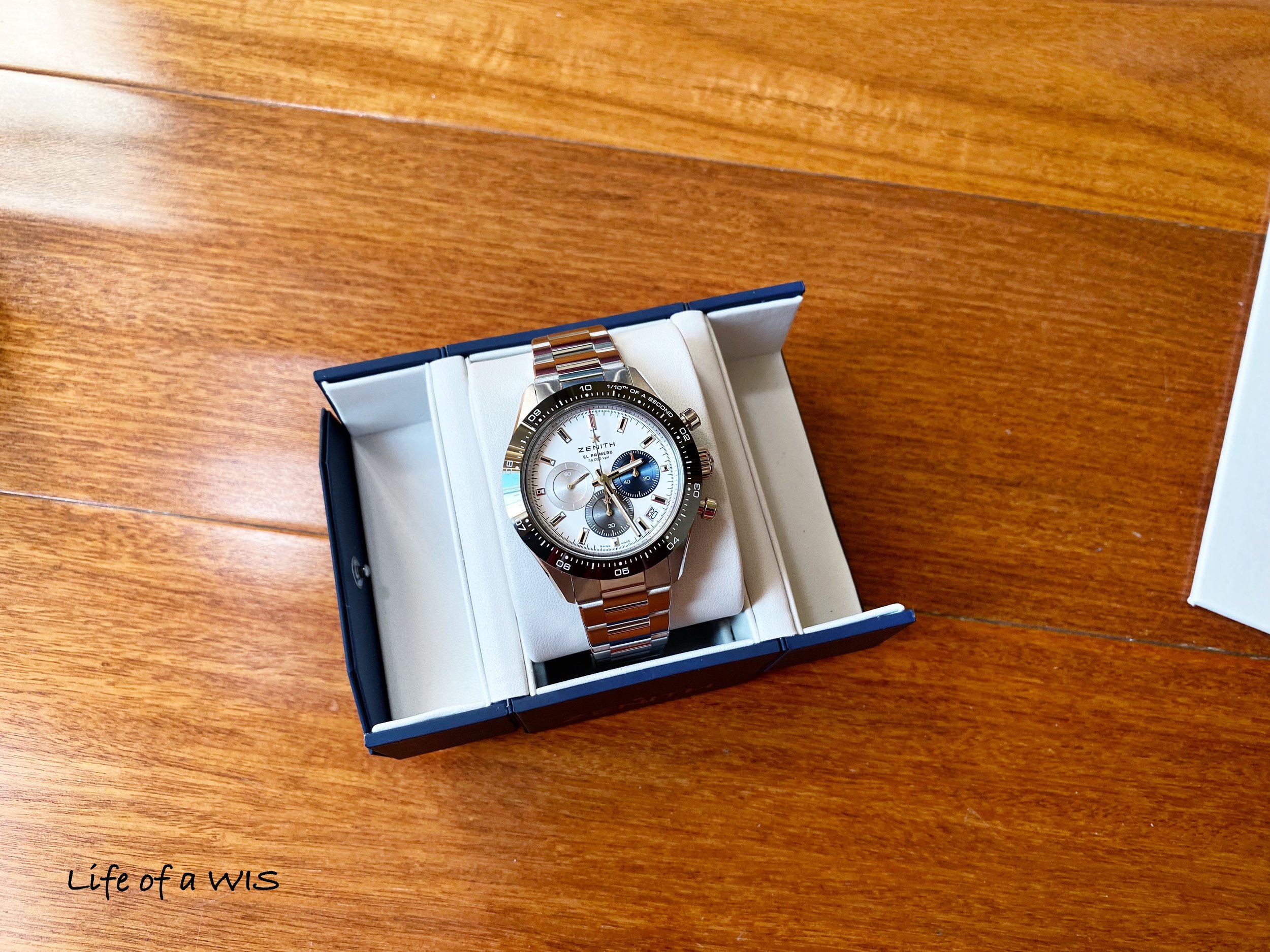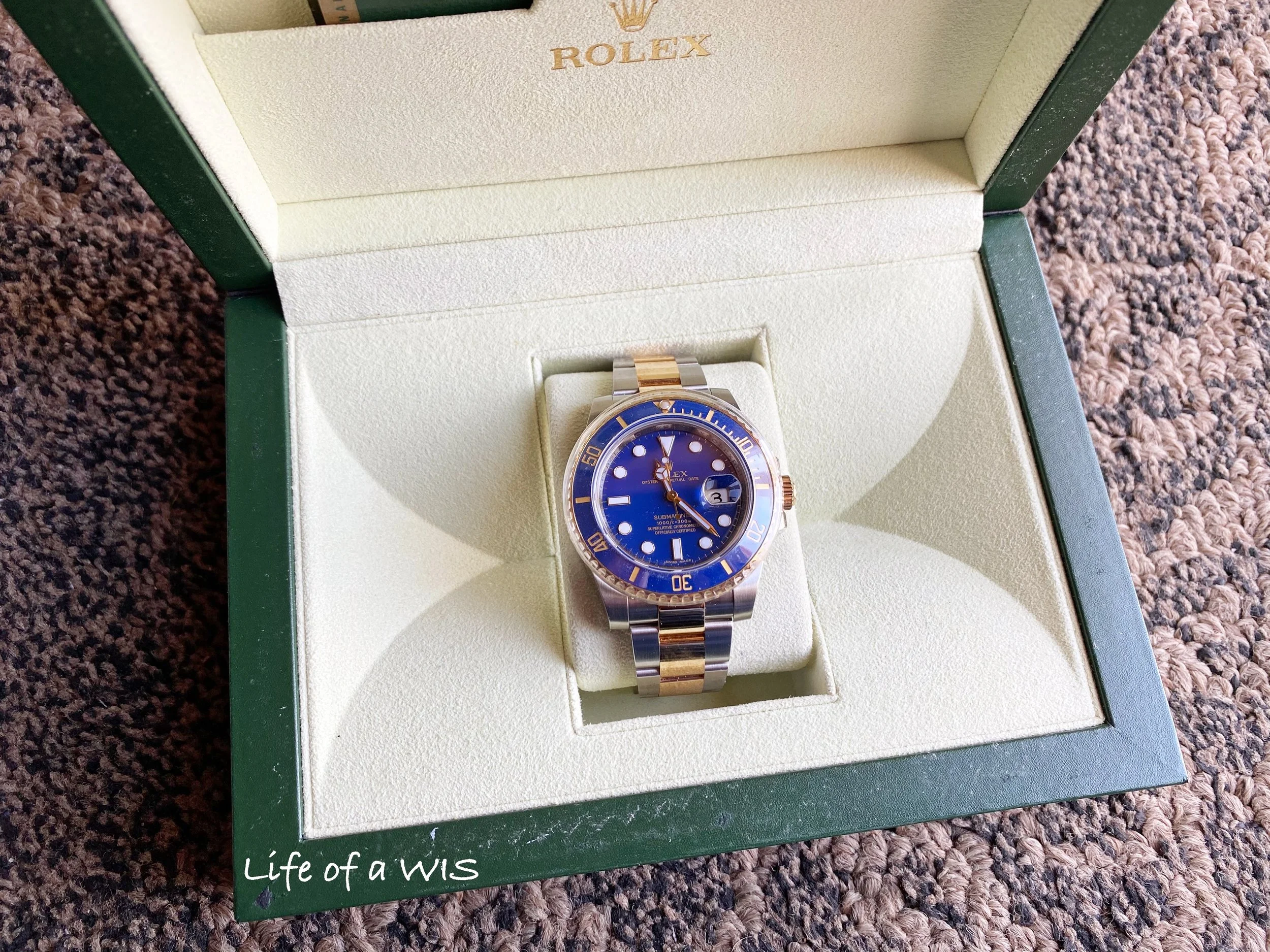Most will agree that the Zenith Chronomaster Sport is a beautiful watch that checks all the boxes. In many ways, it was Zenith’s response to the incredibly successful and impossible to get steel Rolex Ceramic Daytona. From the Oyster bracelet look-a-like, to the folding clasp, to the black ceramic bezel… the similarities are clear, but so are the differences. We will discuss why each is better than the other later and answer the big question, which of the two reigns supreme?
When the Zenith Chronomaster Sport was first released in 2021, like many, I immediately compared it to the steel Rolex Daytona. “Finally a watch I can buy right now that will quench my desire for the unattainable Rolex Ceramic Daytona in stainless steel”, I said to myself. And so I did, twice. After obtaining the white dial with relative ease and being blown away by its beauty in person, I suddenly felt the need to also own the black dial. Surprisingly, the black dial is my favorite of the two. There is no denying that the Zenith Chronomaster Sport is an incredible watch for the money, but is it comparable to the Rolex Ceramic Daytona? Let’s take a closer look…
The colors on the dial are simply stunning.
5 Reasons Why the Chronomaster Sport is Better than the Daytona
The El Primero movement has 311 components and a stunning 36,000 VPH, allowing the watch to time to a tenth of a second. Zenith decided to show case this by having the chronograph’s seconds central hand do a complete turn around the dial in just 10 seconds. A function that is rare and a conversation starter. The Daytona has a robust movement of its own, but it does not have the ability to time to such precision.
The Chronomaster Sport has an open case back, allowing the owner to admire the beautiful El Primero movement. Not only is the movement a marvel from a functional standpoint, it is also an amazing visual work of art.
The Chronomaster Sport also has a date function that is quite useful and something that I miss often when I wear a Daytona. However, the execution of the date function could have been better. When it is located between 4 and 5 o’clock, it always seems like an after thought and inevitably ends up looking out of place.
Both watches are incredibly attractive, but dare I say that the Zenith is just a tad more interesting to look at. Obviously this is entirely subjective, but I find that the added colors on the Zenith make the watch pop.
It is actually a watch that you can buy at retail. There may be a few lucky lottery winners that are able to purchase a Rolex Ceramic Daytona for retail at their authorized dealer, but for the large majority of us, that is simply not happening. With current market prices for the steel Rolex Ceramic Daytona lingering around $30K, owning this watch may just be a dream if you are set on not paying above retail.
BONUS: The watch box is actually functional and useful, part of it that is. The Zenith watch box has an insert that can be removed and converted into a travel case. Simply genius.
A practical travel case inside a typically useless presentation box, genius!
The perfect travel case.
5 Reasons Why the Daytona is Better than the Chronomaster Sport
If there is a part on the Chronomaster Sport that is simply too similar to the Daytona, it has to be the folding clasp on the bracelet. Everything about the Zenith clasp reminds you of Rolex. Unfortunately, the similarities end there. The Rolex clasp is much superior and actually functional. Rolex has a built-in comfort extension that Zenith does not. The micro adjustment slots on the Rolex are hidden, not on the Zenith. And finally, the lip on the Rolex clasp that needs to be pulled up for the clasp to be released, only works on the Rolex as the lip was designed to swivel. The Zenith lacks this feature, which I would say is a design flaw. This results in the Zenith clasp being very difficult to release if you try to do this by pulling on the lip. To workaround this issue, use two fingers and lift the entire clasp from the sides instead of using the lip.
The links on the Rolex Oyster bracelet are attached through one single screw, nice and easy. By far, the best and most user-friendly design when it comes to links on a bracelet. The Zenith on the other hand, uses two screws to secure the links. Which makes removing links that much harder because you need two screw drivers, one to hold one side firm and the second to screw/unscrew the other side. Screw drivers aside, it also takes some level of talent and hand coordination to make this work with only two hands.
The Daytona just feels more comfortable on my wrist. Not sure if it is the smaller 40 mm case size, the shorter case height, the lighter weight, or simply a matter of bracelet sizing (have tried my best to get the most comfortable configuration in both watches)… but the Daytona is noticeably more comfortable on the wrist compared to the Chronomaster Sport.
Market value on the Daytona is insane. If you are lucky enough to score a Rolex Ceramic Daytona at retail, rest assured that the value on that watch will never go below what you paid. On the contrary, it will retain its value and most likely be worth x2 and even x3 its retail cost.
The Chronomaster Sport, as beautiful and stunning as it, it is simply not a “Daytona”. The Rolex Ceramic Daytona, specially in stainless steel, is for many their dream watch or grail. I know it was for me too once. It does not get any more classic than a Rolex Ceramic Daytona.
So which watch reigns supreme? As much as I want to suppress my desire for the Rolex Ceramic Daytona with the help of these two Zenith Chronomaster Sport watches, I must admit that the Zenith is just no Rolex. On its own, the Zenith is a spectacular watch that has many things going in its favor. But next to the Rolex Ceramic Daytona, the Chronomaster Sport does fall short in several areas.






































